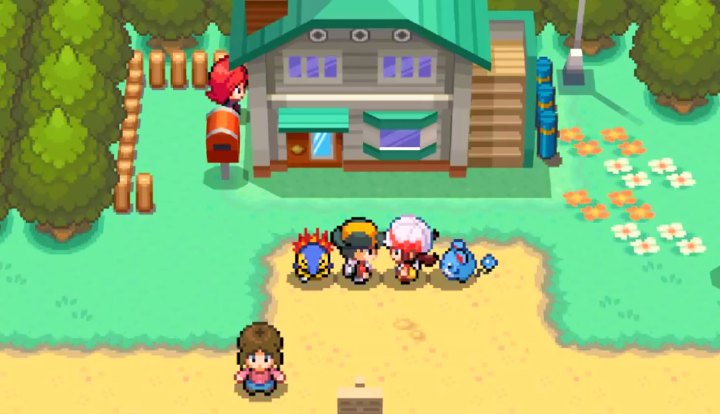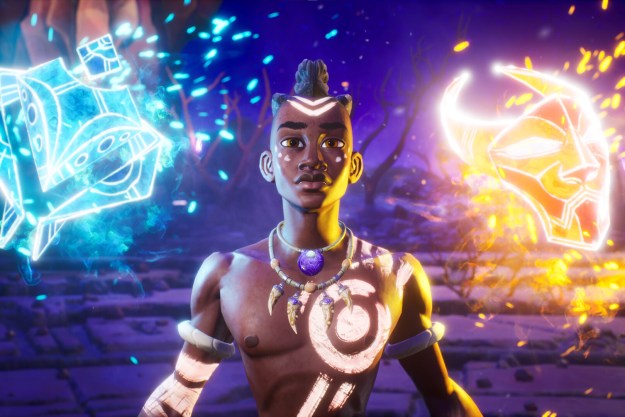Pokémon is a series built on remakes and remasters. Just eight years after Red and Blue made a huge splash on the Game Boy, Nintendo released FireRed and LeafGreen for the Game Boy Advance, which gave players a chance to experience the fun of the original titles in a more accessible format (no more overpowered Psychic-types). Many of the most recent Pokémon releases have been remakes, like last year’s Pokémon Mystery Dungeon: Rescue Team DX, which was a remake of 2005’s Pokémon Mystery Dungeon: Red/Blue Rescue Team.
Some of these remakes are better regarded than others. After fans clamored for Ruby and Sapphire remakes for years, the 3DS release of Omega Ruby and Alpha Sapphire landed with a thud, largely due to their poor graphics and lack of postgame content. On the flip side, HeartGold and SoulSilver, the 2009 remakes of 1999’s Gold and Silver, are widely considered the best remakes that the series has ever seen. While the original games do still hold up, HeartGold and SoulSilver made them even better with beautiful landscapes, lots of content, great music, and, of course, the ability to have your Pokémon walk behind you in-game.
Based on what we’ve seen so far of the upcoming Pokemon Brilliant Diamond and Shining Pearl, remakes of 2006’s Diamond and Pearl, it appears as though those games are taking cues from HeartGold and SoulSilver as to how to organize their adventures — and it’s a step in the right direction for a series defined by remakes.
A strong foundation
Much of HeartGold and SoulSilver‘s success comes from its excellent source material. Gold and Silver, and Crystal to an even greater extent, fixed a lot of the series’ early problems. While Red and Blue ended rather abruptly after the player became the Pokémon League champion, Gold and Silver had incredible postgame content. After players defeated the Johto champion, they could revisit a changed Kanto and beat all of its gym leaders the second time around. HeartGold and SoulSilver kept all of this, making them some of the longest main-series Pokémon games. Players have come to expect what happens during the story in a Pokémon game; what sets each game apart is its potential for unique postgame content or longevity of play.

Gold and Silver were the first Pokémon games to include a day-night cycle. Landscapes would actually change when the hour became late, and certain Pokémon could only be caught at night. Building on this, there were also a variety of events that only happened on certain days of the week. Different non-player characters appeared on different days, like hairdressers who could cut your Pokémon’s hair to increase their friendship level, and events like the bug-catching tournament only happened on certain days. It was a system that made the games feel like a living, breathing world, more akin to Animal Crossing than the relative stagnation of the first games in the series.
Acting as the start of the second Pokémon generation, Gold and Silver introduced a host of new catchable creatures, many of whom have gone on to be some of the most-loved in series history. Many a player has a fond memory of using their Typhlosion, Feraligatr, or Meganium in battle. These Pokémon would later be included in a variety of series spin-offs, including Pokémon Colosseum and Pokémon Mystery Dungeon, which increased their visibility to fans. The games also included two brand-new types, Dark and Steel, which shored up some of Red and Blue’s balance issues.
Building on the best
HeartGold and SoulSilver kept all of these elements and made them feel just as revolutionary as when they first appeared. The game event went so far as to build on many of these novel mechanics: there’s an even greater variety of NPCs who can show up on different days of the week, including a photographer who will take a picture of your team. The day/night cycle was expanded to include morning, day, evening, and night, with wild Pokémon appearances spread throughout all four times. Dark- and Steel-type Pokémon were standbys by the time the games were released in 2009, but the limited pool of generation 2 Pokémon that players have to choose from in the first half of the game still makes them feel novel.

The remakes didn’t stop there, though. The games also received a variety of modern minigames and communication features, like the Pokéathalon competition, the Voltorb Flip minigame at the Goldenrod Game Corner, and the Global Trade System, which allowed players to trade Pokémon with others around the world. Players could walk with the Pokémon at the front of their party, which many found to be one of the most endearing things about the games. The remakes also included new trials, new trainers, and new items to explore, all of which made it feel like players were both visiting an old friend and experiencing something new at the same time. It was a winning combination.
Entering new territory
During last month’s Pokémon Presents, fans got an in-depth look at the upcoming Brilliant Diamond and Shining Pearl, which are aiming to emulate many of the same things that made HeartGold and SoulSilver such renowned remakes. It makes sense, after all: HeartGold and SoulSilver were the most lauded remakes of their generation, and of the entire series, so it makes sense that Nintendo would want to follow a winning formula.
The easiest and most crowd-pleasing feature to bring back was walking with your Pokémon, which the new games will include. Being able to see an entirely new generation of Pokemon made up in 3D is a very cute idea. Beyond that, the game will feature new communication opportunities in the Grand Underground, though I worry that the complete preservation of the Union Room isn’t the direction Nintendo should be going in. We haven’t seen an extended look at the story, but it’s likely that the game will include a couple of new tidbits in order to keep things fresh, and the day-night cycle will almost certainly be making a return as well, considering it was included in the original Diamond and Pearl. The hope is that Brilliant Diamond and Shining Pearl will have a few new things to do, like HeartGold and SoulSilver‘s Pokéathalon. If they’re aiming for the greatness of those games, they almost certainly will.

The big question is whether Diamond and Pearl‘s postgame will be preserved. After beating Sinnoh’s Pokémon League champion, there’s an area that players can travel to that includes three new land routes, new legendary Pokémon, and a host of tough Trainers. It pales in comparison to HeartGold and SoulSilver‘s postgame, but it did keep things interesting for a little while after finishing the main quest. There’s no word on whether Nintendo will be recreating this area, making something entirely new, or scrapping it, like Emerald‘s Battle Frontier was unceremoniously ditched in Omega Ruby and Alpha Sapphire. My hope is that we get an expansion of the original postgame routes, which would provide nostalgia value while also adding to the original. That was the HeartGold and SoulSilver way.
There are only a few months until the release of Brilliant Diamond and Shining Pearl, and it’s likely that we know everything we’re going to know pr-launch by this point. While it’s important for these remakes to have their own spirit and bring back the charm of Diamond and Pearl, it’s also important that they learn their lessons from remakes before them. If Nintendo wants the Pokémon series to continue its reputation for making modern, engaging remakes that aren’t only driven by nostalgia, it would do well to follow in the footsteps of HeartGold and SoulSilver — or risk never challenging those games’ position at the top of the totem pole.
Editors' Recommendations
- You can now use Pokémon music in your YouTube videos
- Nintendo’s insistence on nostalgia holds back its online potential
- 5 things we want to see in Wednesday’s Pokémon Presents
- Pokémon Legends: Arceus and Diamond/Pearl remakes get release dates
- Nintendo Switch has become the premier platform for RPG lovers



